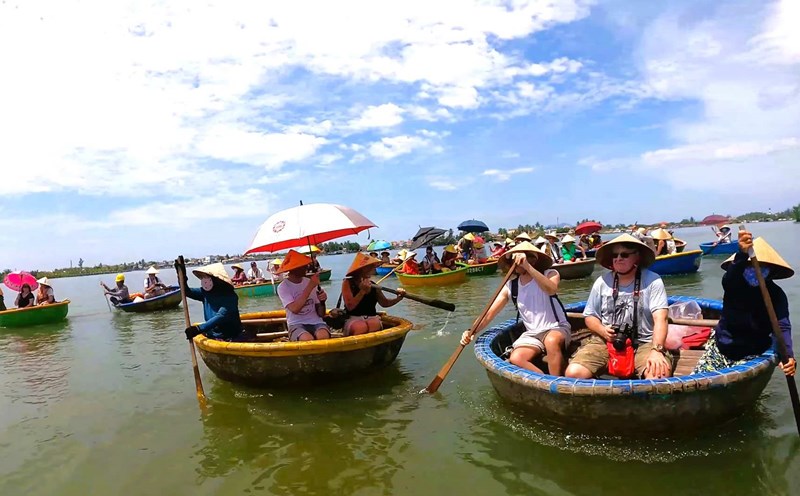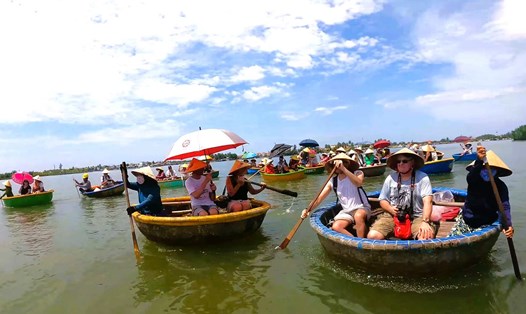The story of sustainable transformation in tourism has become a hot topic in recent years, with keywords such as "green tourism" and "sustainable tourism". How should we understand these concepts, sir?
- Green tourism and sustainable tourism are often confused, but in reality, the scope is different. Green tourism focuses on environmental factors, such as reducing waste, saving energy, using environmentally friendly materials or achieving the goal of carbon neutrality (Net Zero). This is part of sustainable tourism.
Meanwhile, broader sustainable tourism is based on 3 ESG pillars: Environment (green), society (community support, livelihood creation), and governance (long-term, transparent economic development). Simply put, green is a factor, but sustainability requires balancing all 3 to ensure long-term benefits for the destination, business and the community.
How do you assess the transition to green and sustainable tourism in Vietnam?
- Vietnam is making many efforts, but this journey is not easy. The biggest challenge is thinking. From the leaders to the employees of the business, it is necessary to change the way of thinking to act greenly, reduce the impact on the environment such as reducing plastic waste or using renewable energy.
Second, the initial cost is high. Investing in electric vehicles, energy-efficient bulbs or solar power systems is expensive, and the benefits are only seen in the long term.
Third, a business cannot do green alone. For the tourism industry to develop in a green and sustainable direction, there must be synchronization of the entire ecosystem, from suppliers, hotels, restaurants to customers. Finally, the lack of general standards and independent auditing makes measurement of efficiency limited. Many places declare green but do not have specific figures, leading to fake green.
How can all parties in the tourism industry move towards the green goal?
- The tourism industry needs close coordination. First, businesses must raise awareness of suppliers, requiring them to commit to green, such as providing organic foods or friendly packaging. For customers, it is necessary to clearly explain the value of green tourism, for example, why sustainable tours have higher prices, because of input costs, or part of the cost for emission reduction.
The Vietnam Green Tourism Association is playing an important role, launching the Green Tourism Criteria set (VITA Green) to assess sustainability. In addition, it is necessary to conduct an independent audit to ensure transparency.
For example, some enterprises in Hoi An have applied a plastic waste-free model, supported by UNDP, and the results are clearly measured. The important thing is to create a green wave, where all parties - from destinations, businesses to tourists - participate.

Vietnam has committed to significantly reducing greenhouse gas emissions and achieving the Net Zero target (net emissions of 0) by 2050. How can the tourism industry contribute to this goal?
- The tourism industry has the potential to take the lead in the Net Zero target because it is a sector sensitive to market demand. International visitors, especially from Europe and the US, increasingly prioritize "low carbon" tours (carbon) - such as cycling, walking, or staying at green resorts.
My company charges a fee of 1.5 USD/guest/day to compensate for carbon, use this money to plant trees or support the community. For example, in Ha Giang, fees collected from tourists are used to install lights or hot water bottles using solar energy for areas without electricity.
However, to achieve Net Zero, it is necessary to accurately measure emissions and have a specific roadmap. Currently, many places are not synchronous, and lack independent agencies for inspection. If the entire tourism ecosystem - from transportation, accommodation to restaurants - is moving towards the same goal, we can get closer to the Net Zero goal by 2050.
With such difficulties, what are the specific benefits of green and sustainable tourism, both for businesses and the local community?
- For businesses, green tourism creates a competitive advantage. High-end customers from Europe and the US are willing to pay more for responsible experiences, such as waste-free tours or visiting traditional craft villages. Green tourism services also help build brands, especially when certified by reputable organizations. Employees will be more proud to work for a responsible organization, increasing cohesion.
In terms of marketing, green tourism is an attractive storytelling material, attracting customers looking for meaningful experiences. With the community, sustainable tourism creates jobs, preserves culture... Projects such as installing solar power in remote areas not only support local people but also make meaningful tours, making visitors feel like they are directly contributing to the community.
For newly launched businesses, what advice do you have for them to embark on the green tourism journey?
- Don't be too ambitious, start with small steps. For example, replacing energy-saving light bulbs, using water hoses, providing glass water bottles or stainless steel water bottles instead of plastic bottles, or encouraging customers to reuse towels. Building a green mindset from leader to employee, ensuring everyone understands the value of this. Find partners like the Vietnam Green Tourism Association to study the Green Tourism Criteria set and get guidance.
Businesses must take customers as the center, clearly explain why green tours have higher prices, protect the environment or support the community. Measure and publicize the results, for example, how much plastic waste or emissions are reduced, so that visitors can see the true value of green tourism experience.
Finally, don't do it alone - create an ecosystem with suppliers, hotels, restaurants with a green commitment.
How to make green tourism a mainstream trend in Vietnam, instead of just the choice of a few businesses?
- We must make sustainable tourism development a must, not just an option. The government needs support policies, such as green capital funds, tax incentives for sustainable businesses, or reducing operating costs for green projects.
Management agencies need to set specific criteria. For example, the Green Tourism Criteria set includes 3 levels of standards: Standard, advanced, and excellent. In addition, the implementation of green tourism criteria needs to be audited independently to avoid the situation of "fake green".
Businesses must synchronize from suppliers to customers, educating them about green values. The important thing is transparent data, measuring emissions and specific impacts, making them public to build trust. Finally, take advantage of Vietnamese culture, nature, and cuisine as a strength to compete.
So how can green and sustainable tourism help Vietnam compete better in the region?
- That's for sure! Vietnam has a unique culture, beautiful nature, and rich cuisine - the perfect factors for building a green brand. If we do well, we can attract high-end customers, spend more, increase revenue without having to chase after quantity. Green tourism also helps reduce trade deficits, because international visitors spend money directly in Vietnam, called "on-site exports".
The important thing is to have accurate statistics, such as how much customers spend on food, accommodation, or night activities, to better plan. If we combine open visa policies, effective marketing, and quality green tourism products, Vietnam can completely surpass Thailand and Malaysia, becoming a leading sustainable destination in the region.











